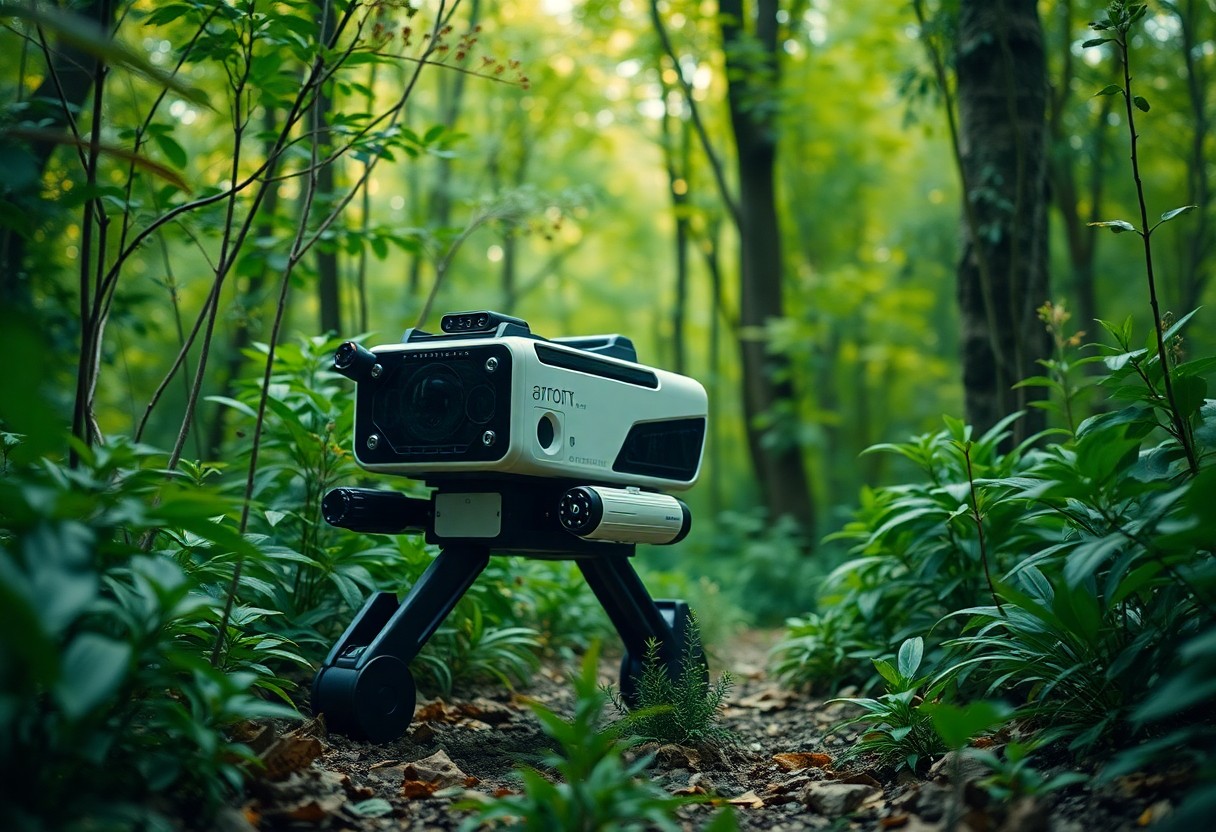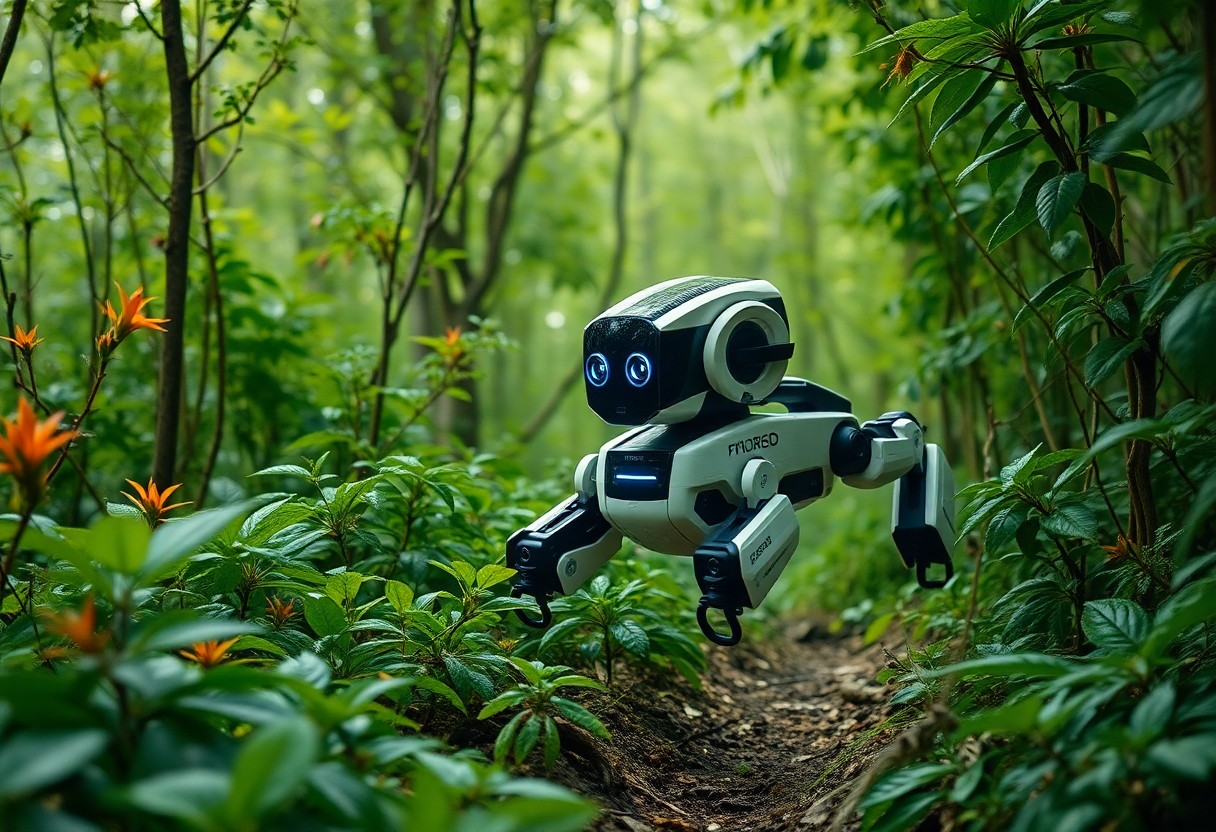Most gardeners and plant enthusiasts face challenges in effectively managing plant health and growth. With advancements in technology, arboreal robots are emerging as innovative solutions to provide precise care and monitoring for your plants. These intelligent machines are designed to navigate treetops and dense foliage, offering you a new way to unlock the secrets of efficient plant care. In this post, you will discover how these cutting-edge devices can enhance your gardening experience and improve the well-being of your plants.

The Technological Breakthroughs Driving Arboreal Robotics
Arboreal robots are rapidly evolving thanks to technological breakthroughs that enhance their efficiency and accuracy. Innovations in sensor technology and advanced artificial intelligence (AI) algorithms are at the forefront of this revolution, making these robots indispensable in modern plant care. By integrating these advancements, you can harness the potential of arboreal robots to effectively monitor and nurture plants like never before.
Innovations in Sensor Technology
Cutting-edge sensor technologies allow arboreal robots to gather real-time data, which shapes their actions around plant health and environmental conditions. These sensors can measure moisture levels, nutrient content, and even detect diseases, enabling you to ensure optimal growing conditions and timely interventions.
Advanced AI Algorithms for Plant Analysis
AI algorithms now possess advanced capabilities to analyze plant data, predicting growth patterns and potential threats. With enhanced image recognition and machine learning, these algorithms can evaluate leaf conditions, assess moisture needs, and identify pests, tailoring care to each plant’s specific requirements.
- Real-time data collection: Sensors give immediate feedback on plant health.
- Targeted treatments: AI defines the best care plan based on specific conditions.
- Predictive analysis: Algorithms forecast growth trends and potential issues.
| Sensor Technology | Gather real-time data for environmental monitoring. |
| AI Algorithms | Process data to deliver actionable insights. |
Advanced AI algorithms enhance the capabilities of arboreal robots significantly. For instance, these algorithms can utilize extensive datasets to learn from previous plant behaviors, adjusting care strategies dynamically to increase plant resilience and maximize growth. This continued adaptation allows you to stay ahead in maintaining healthy plants, reducing the workload associated with traditional gardening techniques.
- Machine learning for evolving care strategies.
- Data-driven decision-making improves plant health.
- Seamless integration with existing gardening systems.
| Custom solutions | Create specific care plans tailored to individual plants. |
| Real-time updates | Incorporate ongoing observations into care methodologies. |
Bridging the Gap: Robotics Meets Horticulture
Advancements in robotics are forging new pathways in horticulture, facilitating enhanced care regimes for various plant species. Arboreal robots, equipped with innovative sensors and AI-driven algorithms, are increasingly adept at monitoring soil conditions, plant health, and environmental variables. This integration allows you, as a gardener, to receive real-time feedback and actionable insights, ensuring your plants thrive with minimal intervention while also reducing resource consumption.
Collaboration Between Engineers and Botanists
Collaboration between engineers and botanists is key in the development of arboreal robots. By combining technical expertise in robotics with in-depth botanical knowledge, teams can create systems that not only function efficiently but also respect the biological needs of plants. This interdisciplinary approach ensures that each design maximizes plant growth while minimizing waste, aligning technology with nature’s principles.
Practical Applications in Urban and Rural Farming
Practical applications of arboreal robots are transforming both urban and rural farming practices. In cities, where space is constrained, these robots can assist with vertical gardens and rooftop farming, optimizing space for maximum yield. Meanwhile, in rural settings, they can undertake labor-intensive tasks like pruning and pest management, allowing farmers to focus on strategic growth and sustainability.
Urban and rural farming practices are increasingly embracing arboreal robots to enhance productivity and sustainability. For instance, robotic systems can be deployed in community gardens to monitor plant health and automate watering schedules, significantly reducing water waste in densely populated areas. In rural contexts, these robots can cover vast agricultural lands, utilizing advanced imaging technology to assess crop health and even detect early signs of disease, providing critical insights that improve overall farm resilience and output. With these applications, you can see not only improved efficiency but also a robust response to the growing demand for sustainable food production in diverse environments.
The Cost-Benefit Analysis of Incorporating Arboreal Robots
Evaluating the cost-benefit ratio of adopting arboreal robots involves analyzing both initial investment and long-term gains. While the upfront costs can be significant—purchases, maintenance, and training—consider the decrease in labor costs and enhanced productivity. Research indicates that farms integrating these robots often see increased crop yields and reduced resource input by as much as 30%. These factors can yield financial returns that justify the initial expenditure, especially as technology advances and prices decrease.
Long-term Financial Implications for Farmers
Farmers who choose to integrate arboreal robots into their operations can realize significant long-term financial benefits. By maximizing crop efficiency and minimizing wastage with precision agriculture, robotic systems might lead to enhanced profitability over time. Some reports suggest that investing in these technologies can yield a return on investment of up to 150% within five years, positioning your farming enterprise for sustainable growth.
Environmental Impact of Automated Plant Care
Transitioning to automated plant care through arboreal robots offers compelling environmental advantages. With robots capable of performing targeted actions—such as precise irrigation and selective pesticide application—there is a notable reduction in chemical runoff and water usage. This leads to healthier ecosystems and improved soil health. Moreover, studies have shown that farms adopting robotic solutions experienced a decrease in carbon footprint by approximately 20%, highlighting a pathway towards greener agricultural practices.
Engaging in automated plant care not only improves operational efficiency but also aligns your practices with environmental sustainability goals. By minimizing inputs like water and fertilizers, you contribute to soil conservation and reduced pollution. Additionally, robots equipped with sensors can identify and treat issues before they escalate, lowering the risk of over-application of chemicals. As consumers become more environmentally conscious, demonstrating a commitment to sustainable practices can enhance your marketability and attract eco-friendly clientele.
Future Trends: What’s Next for Arboreal Robotics?
Advancements in arboreal robotics are poised to reshape the landscaping and agriculture industries. As technology continues to evolve, these machines will become increasingly adept at performing complex tasks such as pruning, pest identification, and precise watering. The fusion of artificial intelligence and robotics will allow these systems to learn from their environment, enhancing their efficiency and versatility in plant care.
Predictions for Industry Growth and Adoption
The arboreal robotics market is expected to see significant growth, with predictions estimating an annual growth rate of over 25% in the next five years. Increased investment in agricultural technology and a growing focus on sustainability are major factors driving this trend. As more businesses adopt these technologies, the demand for skilled technicians to operate and maintain these systems will also rise.
The Next Generation of Smart Horticultural Tools
The next generation of smart horticultural tools combines machine learning and environmental sensors to optimize plant care. These tools will analyze soil moisture levels, nutrient content, and crop health in real-time, allowing you to make informed decisions about your plants’ needs. For instance, robotic arms equipped with advanced imaging technology can identify diseased leaves and target interventions specifically where they are needed. This precision not only improves plant health but also maximizes resource efficiency, ensuring that water and nutrients are used judiciously, ultimately leading to a more sustainable approach to plant care.
Ethical Considerations in the Rise of Plant-Caring Robots
As you explore the implementation of arboreal robots in plant care, ethical concerns inevitably arise. The ability of these robots to systematically manage vast expanses of flora raises questions regarding their impact on both employment and environmental sustainability. While the efficiency benefits are clear, addressing the balance between technological advancement and ethical responsibilities will be key to fostering a harmonious relationship between humans and robots. Examples like the 8 planting and seeding robots you should check out illustrate how this field is evolving while keeping ethical considerations at the forefront.
Addressing Job Displacement Concerns
Industries increasingly face the challenge of job displacement as automation becomes more prevalent, and plant care is no exception. While it’s true that robots can take over time-consuming tasks, the solution lies in upskilling workers to adapt to new roles that focus on monitoring, maintenance, and innovation. Bridging this gap can lead to a workforce capable of leveraging technology to enhance productivity rather than being replaced by it.
Balancing Automation with Sustainable Practices
Automation in plant care should not come at the cost of sustainable practices. As you integrate arboreal robots into your gardening or agricultural endeavors, emphasize environmentally responsible techniques such as precision watering, organic pest control, and biodiversity enhancement. Implementing AI-driven analytics allows for data-driven decisions tailored to optimize resource use without harming the ecosystem. Combining robotic efficiency with eco-friendly practices paves the way for a future where technology supports sustainable agriculture, leading to healthier plants and soils while minimizing waste and resource consumption.
Expanding on sustainable practices, consider using arboreal robots equipped with sensors that monitor soil moisture levels and plant health in real time. This data allows you to irrigate more precisely, reducing overuse of water and fertilizers. For instance, when robots can identify stressed plants needing immediate care, you can make informed decisions based on actual needs rather than generalized maintenance schedules. Ultimately, successfully blending automation and sustainable practices will require ongoing collaboration between technologists, ecologists, and agricultural experts, ensuring that advancements not only enhance efficiency but also protect our planet’s resources for future generations.
Final Words
To wrap up, you can see that arboreal robots represent a promising advancement in the quest for more efficient plant care. By utilizing these innovative machines, you can enhance your ability to monitor and maintain plant health, streamline your gardening practices, and ultimately foster a more sustainable environment. As technology continues to evolve, the integration of arboreal robots in your horticultural endeavors may very well unlock new potentials for optimizing growth and productivity in your green spaces.

